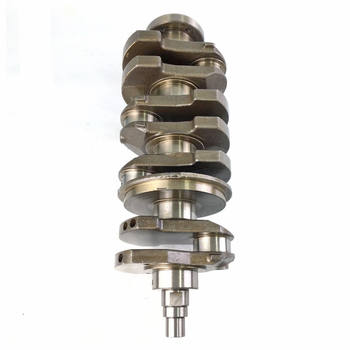The art of crankshaft grinding
In the world of engine mechanics, crankshaft grinding is a crucial process that can make or break your engine's performance. To be honest, it's an art form in its own right. But have you ever wondered how the precision of this process affects your engine's overall performance? Well, you're in the right place.
Understanding tolerances
Before diving into the specifics, let's talk about tolerances. In engineering, a tolerance is the allowable deviation from a nominal or desired value. When it comes to crankshaft grinding, tolerances refer to the acceptable variations in size, shape, and surface finish of the crankshaft's main journals and rod journals.
The role of crankshaft grinding in engine performance
Here's the thing: crankshaft grinding plays a vital role in engine performance. A precisely ground crankshaft ensures optimal clearance between the main journals and the engine's main bearings, as well as the rod journals and the connecting rod bearings. This, in turn, leads to smoother engine operation, better power output, and improved fuel efficiency.
Reduced friction and wear
Tighter tolerances result in reduced friction between the crankshaft journals and their respective bearings. This means less wear and tear on these critical components, which translates to longer engine life and improved reliability.
Improved oil control
Interestingly enough, tighter tolerances also enhance oil control within the engine. This is because the oil clearance between the crankshaft journals and bearings is minimized, allowing for better lubrication and cooling of the engine's moving parts.
Practical applications: Achieving optimal crankshaft grinding precision
Now that we understand the importance of crankshaft grinding precision, let's explore some actionable tips for achieving optimal results:
- Choose a reputable machine shop: Select a shop with experience in crankshaft grinding and a strong commitment to quality.
- Use high-quality grinding equipment: Modern grinding machines with advanced features, such as computer-controlled processes and automatic feedback systems, can help ensure consistent, accurate results.
- Inspect the crankshaft thoroughly: Before grinding, carefully inspect the crankshaft for damage, such as cracks or excessive wear. Address any issues before proceeding with the grinding process.
Conclusion: The pursuit of perfection
As it turns out, crankshaft grinding precision has a significant impact on engine performance. By understanding the role of tolerances and following best practices for achieving optimal results, you can unlock your engine's full potential. So, the next time you're faced with a crankshaft grinding project, remember: the pursuit of perfection is well worth the effort.




